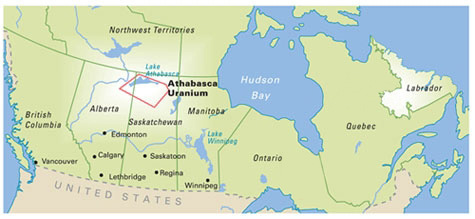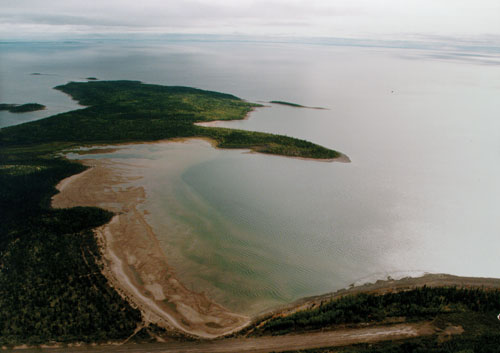Lake Athabasca
The Lake Athabasca (English Lake Athabasca, Athabasca French Lac; Cree for "Where there are reeds " ) is located in the northwest corner of the Canadian province of Saskatchewan and the northeast corner of Alberta between 58 ° and 60 ° north latitude.
The lake covers at an altitude of 213 meters an area of 7850 km ², it is 283 km long and has a width of up to 50 km. With its dimensions and a depth of 243 m, it is the largest and deepest lake in Saskatchewan. The lake drains north via the Slave River ( " Slave River ") and the Mackenzie River into the Arctic Ocean.
On the eastern shore of the lake, the town of Fort Chipewyan, the oldest European settlement in Alberta is located, where the Slave River begins its way north, bounded on the east by the Wood Buffalo National Park. On the south shore of the lake, the Lake Athabasca Sand Dunes, the largest active sand dunes in the world are located north of the 58th parallel of latitude. After a long struggle between the administration bureaucracy and resistance of the mining companies, the dunes are recognized as Provincial Wilderness Park since 1992.
Gold and uranium discoveries on the north shore have led to the founding of the city Uranium City, in which the miners and their families were settled. Since the 1980s, the mines are closed, the north shore of the lake, however, is affected by the mining activity still ecologically significant.
The Athabasca is home to 23 different species of fish, including the American char, of which a world record breaking specimen was caught with a weight of 46.3 kg.









